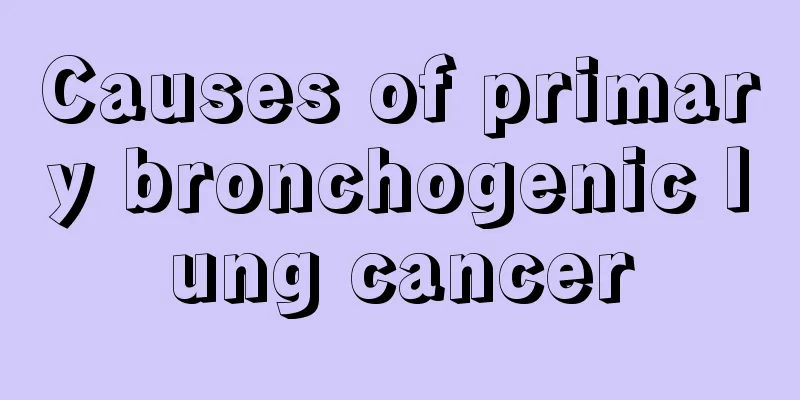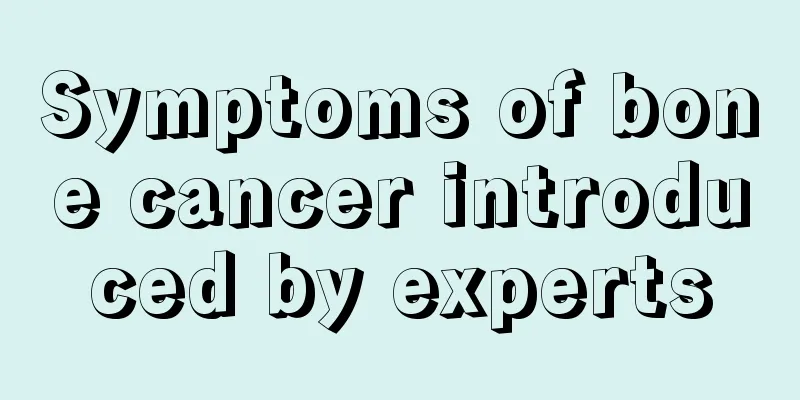Things to note about transient ischemic attack

|
There are many aspects of transient cerebral ischemia that deserve our attention. First of all, we must understand the cause of transient cerebral ischemia. After understanding the cause of transient cerebral ischemia, we must also know how to effectively prevent transient cerebral ischemia and how we should treat transient cerebral ischemia. Knowing these, we can remain calm when encountering a transient ischemic attack. Transient ischemic attack is generally caused by heart disease, cerebral atherosclerosis, microembolism, or changes in hemodynamics and blood composition. We must pay attention to the prevention of transient ischemic attack. Causes 1. Cerebral atherosclerosis Cerebral atherosclerosis is part of systemic arteriosclerosis. Gray-yellow plaques on the surface of the arterial intima, continuous proliferation of collagen fibers on the surface of the plaques and proliferation of lipid-containing smooth muscle cells cause narrowing of the arterial lumen. Even the cells deep in the fibrous plaque undergo necrosis to form an atheromatous plaque, and the fibrous cap on the surface of the atheromatous plaque undergoes necrosis and ruptures to form an ulcer. Necrotic atherosclerotic plaque material can be discharged into the blood and cause embolism. Ulcers can bleed to form hematomas, causing narrowing or even blockage of the lumen of small arteries, thereby obstructing blood supply. The main causes of atherosclerosis are: hypertension, hyperlipidemia, diabetes, smoking, obesity, insulin resistance and other factors. Most scholars believe that the pathogenesis of atherosclerosis is complex and is a comprehensive and long process. 2. Microembolism The contents of atherosclerotic plaques in the aorta and cerebral arteries and the fragments of mural thrombi when ulcers occur can be scattered in the bloodstream and become microemboli. These microemboli, composed of cellulose, platelets, leukocytes, and cholesterol crystals, enter the arterioles through the circulating blood flow and can cause microembolism, leading to local ischemic symptoms. Microemboli are decomposed by enzymes, or due to ischemia and dilation of distal blood vessels, the emboli move to the blood extremities, whereupon blood supply is restored and symptoms disappear. 3. Heart disease Heart disease is the third risk factor for cerebrovascular disease. Various heart diseases such as rheumatic heart disease, coronary atherosclerotic heart disease, hypertensive heart disease, congenital heart disease, and various possible complications of heart damage such as atrial fibrillation, atrioventricular conduction block, heart failure, left ventricular hypertrophy, bacterial endocarditis, etc., these factors increase the risk of cerebrovascular disease, especially the risk of ischemic cerebrovascular disease, by affecting hemodynamics and embolus detachment. 4. Hemodynamic changes Rapid head turning or neck flexion and extension can change cerebral blood flow and cause dizziness, and in severe cases can trigger transient ischemic attacks. This is especially likely to occur when there are conditions such as atherosclerosis, cervical spondylosis, foramen magnum malformation, and carotid sinus hypersensitivity. Lesions of the aortic arch and subclavian artery can cause steal syndrome, affecting blood supply to the brain. 5. Changes in blood composition Various changes in blood components and blood pathological conditions that affect blood oxygen, blood sugar, blood lipids, blood protein levels, as well as blood viscosity and coagulation, such as severe anemia, polycythemia, leukemia, thrombocythemia, dysproteinemia, and hyperlipoproteinemia can trigger transient ischemic attacks. Diet for transient ischemic attack 1. Soak 6 grams of black fungus in water and add it to dishes or steam it. It can lower blood lipids, resist thrombosis and platelet aggregation. 2. Boil 5 celery roots and 10 red dates in water. Eat the dates and drink the soup. It can help lower blood cholesterol. 3. Eat fresh hawthorn or soak hawthorn in boiling water, add appropriate amount of honey, and drink it as tea after cooling. It can dilate blood vessels, and has the effects of lowering blood pressure and promoting cholesterol excretion. If a stroke is complicated by diabetes, it is not advisable to add honey. 4. Eating 10 to 15 grams of raw garlic or onion can lower blood lipids, enhance fibrin activity and resist vascular sclerosis. ? 5. Stroke patients can drink 5 to 10 ml of vinegar after meals, which can soften blood vessels. 6. Banana flower drink: 5 grams of banana flower, boiled in water and drink as tea. It can prevent stroke and cerebrovascular accident. 7. Celery juice: appropriate amount of celery. Wash the celery, remove the roots, and mash it to extract the juice. Take 3 times a day, 3 tablespoons each time, for 7 days as a course of treatment. Clears internal heat, lowers blood pressure and promotes sleep. It is mainly used to treat stroke and hypertension, and also has a good effect on vascular sclerosis. 8. Millet and sesame porridge: 50 grams each of winter sesame seeds, mint leaves, and schizonepeta spicate, and 150 grams of millet. Fry the winter sesame seeds, peel them and grind them into powder; put water in a casserole and boil the mint leaves and schizonepeta spicate first, then remove the residue and take out the juice, then put the sesame kernels and millet into the juice, add water and cook into porridge. Take once a day on an empty stomach. Nourishes kidney qi, moistens intestines, and clears away heat. It can assist in treating stroke and large intestine stagnation. Above we introduced what transient ischemia is. We know that transient ischemia attacks are very scary, so we must do a good job in preventing transient ischemia. Patients with transient ischemia can pay attention to some of the dietary suggestions introduced above, which will be beneficial to the recovery of transient ischemia. |
>>: Precautions for reflux esophagitis
Recommend
What kind of fungus is onychomycosis? These people should pay attention to it
Onychomycosis is a fungal infection that is conta...
What is the cause of esophageal cancer
What is the cause of esophageal cancer? This is a...
Experts introduce six steps to wash your face correctly
For women who love beauty, washing the face is ve...
Four causes of colorectal cancer that need attention
Intestinal cancer is a malignant tumor with a hig...
What are the effects and functions of aconite
The efficacy and function of aconite are mainly m...
What are the benefits of washing your hair with white wine
When it comes to liquor, everyone will have a cer...
Knee pain when squatting
Knee pain during squats is mainly caused by wear ...
Is Chinese medicine useful for liver cancer
Is Chinese medicine useful for liver cancer? 1. T...
Is mild splenomegaly serious?
The spleen is mainly distributed with lymphatic t...
Examination methods for confirming colon cancer
Correct medication guidance for colon cancer pati...
What should lung cancer patients eat? Dietary requirements for lung cancer patients during chemotherapy
Lung cancer is a malignant tumor disease, so it h...
Are potatoes considered soy products?
Potatoes are not soy products. The definition of ...
Can a nose that has never bled be nasopharyngeal cancer?
Nasopharyngeal cancer is a common cancer. General...
The pros and cons of reducing acid on hair
Many people may not know what reducing acid is. I...
Tips for treating red eyes in spring
Spring is the season when many diseases breed, an...









